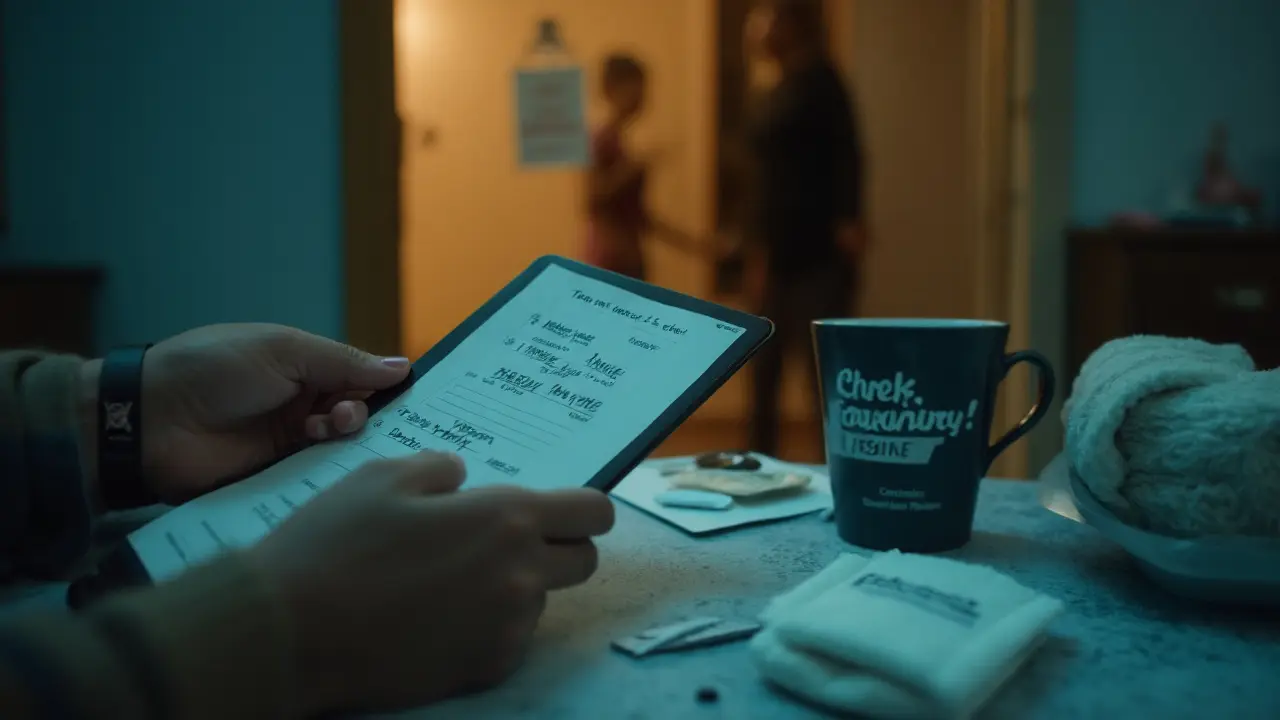Money changes sex, but it doesn’t erase consent or care. When sex is a job, you price your time and set terms. When sex is part of love, the currency shifts to feelings, attention, and trust. Both are negotiations. The people who handle those negotiations clearly have fewer blowups and better outcomes.
First, some quick definitions. Sex work is an umbrella: full-service work, escorting, content creation, camming, sugaring, and more. Dating is personal intimacy without a listed rate. Sugaring sits in a gray zone-some treat it like work with allowances and boundaries; others treat it like dating with gifts. The common thread is clarity. If there’s money or benefits tied to intimacy, spell it out.
Consent runs on details. In sex work, consent is explicit: which activities, how long, what boundaries, what aftercare, what rate, what payment method. In dating, consent is still explicit, just less itemized. A simple rule that works in both: say what’s okay, what’s off-limits, and what happens if someone pushes a boundary. No guessing. No “you should have known.”
Money talk keeps people safe. For work: post or share rates, require a deposit, confirm services and time, and state your cancellation policy. No “vibe discounts.” No “just hanging out” at half price. For dating: don’t hide financial expectations inside romance. Decide who pays what and when. If one partner earns much more, discuss a split that feels fair instead of letting resentment simmer.
Safety is a system, not a feeling. Workers: screen before meeting (ID or employment verification, references, or video chat), use a work-only number, and keep a check-in buddy who expects your “all good” message by a set time. Meet first in public if that lowers risk. Control the space when possible. Take your own transport. Keep emergency cash separate. Don’t hand over your phone or ID. Clients: show references when asked, pay deposits without pushback, and respect screening questions; they’re about safety, not drama.
Privacy protects your future. Separate work and personal devices, emails, and cloud backups. Use an alias for work. Turn off photo location data. Blur identifying marks in content. In many places, selling sexual services is criminalized; in the U.S., it’s illegal in most states except parts of Nevada. That legal risk affects housing, banking, travel, and even custody. Keep records tidy, taxes handled, and never mix client data with personal accounts.
Health is part of the job, and part of love. The CDC advises at least annual STI testing for sexually active adults; if you have multiple partners or do sex work, consider testing every 3-6 months. Use barriers consistently (external/internal condoms, dental dams), carry spares, and learn how to check for breaks. Ask your clinician about vaccines that matter here (HPV, hepatitis A and B). If HIV risk is a concern, talk about PrEP; if a condom breaks with risk, know how to get PEP fast-ideally within 72 hours.
Dating a sex worker? A few basics make it smoother. Don’t ask for freebies or “just this once.” Don’t demand client details. Be reliable with time. Assume work phones stay private. If jealousy flares, say it plainly and work on it, instead of testing boundaries. Ask what support actually helps-maybe it’s a ride home after a late gig, maybe it’s a quiet evening with zero work talk.
Working while dating? Decide your disclosure plan. Some tell dates early to screen out bad fits. Others wait until there’s trust. Either way, have a simple script ready and watch how they respond. Green flags: curiosity without prying, respect for boundaries, no pressure to quit. Red flags: moral shaming, “prove you love me by stopping,” or sudden surveillance of your phone, friends, or money.
Keep the lines clean between labor and love. Routines help: a shower and outfit change before switching from work to home; a hard stop time for messages; one day off weekly with no booking exceptions. In love, show your care in the currency that matters-attention, presence, small acts-so money doesn’t try to fill emotional gaps it can’t fill.
- Terms, Definitions, and Gray Zones
- Consent, Boundaries, and Money
- Safety, Screening, and Privacy
- Health, Testing, and Protection
- Dating a Worker (and Working While Dating)
Terms, Definitions, and Gray Zones
Words matter because they set expectations and shape safety. The umbrella term sex work covers a wide range of paid sexual and erotic services. Dating, by contrast, is personal intimacy without a listed rate. The gray zones sit where money, gifts, and intimacy overlap, which is why clear language helps everyone make informed choices.
Here’s a plain map of common categories. People may use more than one label, and local laws change what’s possible:
- Escorting: paid companionship that may include intimacy, depending on agreements and local law. Often arranged by the hour. Many escorts state “time only” to keep things legally safer.
- Full-service: in-person sexual services for pay. Laws vary widely by country and even by city.
- Brothel-based: services provided in licensed venues where legal (for example, some counties in Nevada; more on this below).
- Street-based: outdoor or curbside solicitation. More visible, often higher police contact, and typically riskier due to environment.
- Erotic massage: bodywork with erotic elements. Laws differ; some places treat this as prostitution, others as massage violations.
- Professional domination (pro-domme/pro-dom): BDSM services focused on power exchange and scenes; many providers set strict limits and often no nudity/penetration.
- Cam/phone/chat: live video, voice, or text interactions paid by the minute or session. No in-person contact.
- Content creation: selling photos/videos or subscriptions on platforms (for example, subscription sites launched mid-2010s). Creators may also sell custom clips or pay-per-view messages.
- Club-based dancing: stripping or lap-dancing in venues. In many places, workers are independent contractors and pay “house fees.”
- Sugaring: relationships with allowances or gifts in exchange for time and intimacy. Some treat this as work with clear terms; others frame it as dating with benefits.
Dating terms are simpler but still benefit from clarity:
- Casual dating: spending time without expectations of exclusivity or shared finances.
- Exclusive dating: agreed monogamy, but still no explicit pay.
- Transactional relationships: romance where money, rent help, or gifts become a steady part of the bond-common worldwide, but not always labeled as such.
There’s also a legal line between consensual labor and exploitation. Under the UN Palermo Protocol (2000), trafficking involves force, fraud, or coercion (or any commercial sexual activity involving minors). Adults choosing to sell services without coercion are not trafficking victims. That distinction shifts how police, courts, and services should respond.
Laws shape how gray a zone feels. A quick snapshot of well-known models and dates:
| Jurisdiction | Year/Policy | Model | Who is criminalized | Notable outcomes (reported) |
|---|---|---|---|---|
| New Zealand | 2003 - Prostitution Reform Act | Decriminalization | Neither buyers nor sellers; health/safety laws apply | Government reviews reported better ability to refuse clients and improved safety practices |
| Sweden | 1999 - "Nordic model" | Buyer criminalization | Buyers (not sellers) | Advocates cite reduced street markets; critics report displacement and persistent stigma |
| Germany | 2002 law; 2017 registration reforms | Legalization/Regulation | Neither, if licensed/registered; regulations apply | Large legal sector with licensing; debates over registration burdens and privacy |
| Netherlands | 2000 - brothel ban lifted | Legalization/Local licensing | Neither, within licensed venues | Municipal control varies; ongoing concerns about unlicensed sectors |
| United States | Ongoing; FOSTA-SESTA (2018) | Criminalization (most states); limited Nevada brothel legality | Mostly both buyers and sellers; legal in some licensed Nevada brothels | Online ads tightened after 2018; personals sites closed or restricted; rural NV counties license brothels |
A few U.S. specifics that cause confusion: prostitution is illegal in 49 states and the District of Columbia. In Nevada, only certain rural counties can license brothels; selling sexual services outside a licensed brothel is illegal statewide, including Las Vegas and Reno. Escorting as “companionship only” may be legal to advertise, but exchanging sexual services for money remains illegal. Always check the law where you live and work.
Online rules changed in 2018 with FOSTA-SESTA in the U.S., which expanded liability for platforms hosting content seen as facilitating prostitution. Big effects followed: Craigslist shut down personals, Backpage was seized, and many platforms tightened moderation. That pushed more screening and advertising into smaller sites, private forums, and subscription platforms, which raised costs and reduced visibility for many workers.
How do gray zones show up day to day?
- Sugaring: some treat it like a job with a monthly allowance and clear boundaries. Others date first, then gifts flow. Trouble starts when one person thinks it’s romance and the other thinks it’s paid time.
- “Time only” escorting: providers advertise lawful companionship; clients may expect more. Clear pre-meet communication and respecting “no” prevent conflict.
- Content creators meeting fans: most creators never meet subscribers offline. When they do, it becomes in-person services with new legal and safety issues.
- Dating with money in the mix: paying rent, buying flights, or covering bills can turn fights into contract disputes. Spell out expectations to avoid resentment.
Industry jargon you might see:
- “Screening”: checking ID, references, or employment before meeting.
- “Deposit”: partial upfront payment to confirm time and reduce no-shows.
- “Cancellation policy”: fees or terms if a booking ends early or is canceled late.
- “GFE/PSE”: style of service branding. These are marketing labels, not promises to override boundaries.
- “SWer”: shorthand many workers use for themselves in text.
Two quick rules keep things clear. First, label the relationship type out loud: is this dating, paid time, or a sugar arrangement? Second, list the basics-time, boundaries, payment, privacy-before anyone meets. If labels shift, update the terms, just like you’d update a rental or a job contract.
Final note on language: use the labels people choose for themselves. Some prefer “worker,” others prefer specific roles like “dancer” or “creator.” Avoid assuming that all paid intimacy looks the same, or that all unpaid intimacy is free of transactions. The lines are social, legal, and personal-and they’re easier to navigate when you name them clearly.
Consent, Boundaries, and Money
Consent isn’t a vibe; it’s a clear yes. Planned Parenthood’s FRIES model sums it up well: Freely given, Reversible, Informed, Enthusiastic, and Specific. That means anyone can change their mind, details matter, and silence or pressure isn’t a yes. If someone is unconscious or too impaired, they cannot consent-full stop. This standard applies on a date, in a long-term relationship, and in sex work.
Work and love handle consent differently, but the core stays the same. In dating, you might just talk preferences and limits. In paid contexts, you itemize: activities, time, location, aftercare, and what happens if anyone withdraws consent. BDSM circles use two helpful checks: “safe, sane, consensual” and “RACK” (Risk-Aware Consensual Kink). Even if you’re not into kink, the habit of setting terms up front makes things safer.
Boundaries are where safety lives. There are five buckets worth naming: physical (what’s okay, what’s not), time (start/stop times), emotional (no relationship promises during work), digital (no filming, no photos without permission), and logistical (where to meet, who controls the space). State them early, restate them before you begin, and have a plan if something shifts. A short script works: “Here’s what I’m okay with, here’s what I’m not, and here’s what we do if either of us changes our mind.”
Money doesn’t buy blanket access; it buys time and agreed services. Keep the link clean: payment covers the session as described, not whatever someone asks for later. No “you owe me more because I spent extra” and no “I paid, so I get anything I want.” If consent changes mid-session, the session pauses or ends, and you follow your stated policy for refunds or rescheduling.
Put the money rules in writing. For workers: list rates, accepted methods, deposit amount, cancellation policy, grace period for late arrivals, and what triggers an early end. For clients: read the policy and confirm in writing. In many places, contracts for sexual services are not enforceable and may be illegal, so think of this as a safety and clarity memo, not something you’ll litigate. The point is to prevent confusion, not to win a lawsuit.
Payment mechanics matter. Cash is simple and avoids chargebacks. Card and app payments can be reversed months later; banks often allow chargeback claims within 60-120 days depending on the network. Many payment apps (like PayPal and Venmo) prohibit paying for sexual services in their terms, which can lead to frozen accounts. If you use digital payments, avoid explicit memos, keep screenshots of agreements, and don’t store client details in personal clouds. For content-only platforms that allow adult material, follow their ID and verification rules to stay in bounds.
Deposits reduce no-shows. A common setup is 20-50% to hold time, paid before you travel or prep. Tie the deposit to a clear cancellation window-example: “Cancel 48 hours before for a full credit; within 24 hours, deposit is kept.” Spell out what counts as a no-show, and how long you’ll wait before you leave. If safety changes (bad gut feeling, intoxication on arrival, boundary testing), your policy should let you walk and keep the deposit for your time.
Here’s a practical template you can adapt: “Session is 90 minutes at $X. Activities: A, B, C. No D or E. Location: my space. Deposit: 30% via [method], balance in cash on arrival. Cancel ≥48h for full credit; <24h, deposit kept. No filming or audience. If anyone withdraws consent or I feel unsafe, we stop. If you’re 15+ minutes late, time counts down.” Text or email it, and save a screenshot.
Dating needs money talk too. Research out of Kansas State University (2012, Family Relations) found that frequent fights about money strongly predict divorce. Don’t dodge it. Decide how you’ll split costs, when you’ll check in about budgets, and what “fair” looks like if incomes differ. If one partner pays more, name it as a choice, not a silent expectation. That keeps affection separate from transactions.
Economic control is a red flag. The CDC includes economic abuse-like taking your money, blocking work, or tracking every purchase without consent-as part of intimate partner violence. Watch for behaviors like hiding joint funds, forbidding you from seeing pricing or policies, or pressuring you to lower rates “for love.” Green flags are simple: asks for your boundaries, sticks to them, and is fine putting agreements in writing.
Use short, direct scripts to keep things smooth:
- Work: “These are my boundaries: no filming, no rough play, and I keep control of the space. If anything changes, we stop and reassess.”
- Payment: “I take a 30% deposit to book. Balance is cash on arrival. If you cancel within 24 hours, the deposit is kept.”
- Dating: “I’m comfortable splitting for now. If we keep seeing each other, we can revisit based on what’s fair for both of us.”
- Mid-session change: “I’m not comfortable with that. We can stick to what we agreed, or we can pause here.”
Finally, practice the exit. If a boundary gets pushed, you end it without debate. Stand up, gather your things, and leave or ask the other person to leave. Follow your policy, send a brief written note if needed, and don’t re-litigate over texts. Clear rules, short scripts, and consistent money habits keep consent honest in both work and love.

Safety, Screening, and Privacy
Safety isn’t a feeling; it’s a checklist you actually follow. In sex work, screening is your first line. Privacy is your second. Logistics is your third. Stack all three and you cut risk without killing your time or income.
Start with layered screening. One data point is easy to fake; three are harder. Aim for at least two of these: a real-time video chat (no filters), a verifiable work footprint (company email or LinkedIn with history), references from known providers, and a deposit from a traceable method that matches the name you were given. If someone pushes back hard on every step, that’s your signal.
- Video chat: 2-3 minutes is enough to confirm face, voice, and vibe. Ask them to show today’s date on screen if needed.
- Work verification: Ask for a business-domain email reply or a short call to a public office number. Never click odd links; you call them.
- References: Two recent references with contact methods providers prefer. You send a short, neutral template; no details, just “Was this person on time, paid, and respectful?”
- Deposit: Small but meaningful (10-30%). Use the same name they gave you. Refund rules should be clear in writing.
Red flags worth canceling over: last-minute location changes to private homes, pushing for off-platform messaging you didn’t choose, “I don’t do deposits,” “I forgot my wallet,” bringing extra people, or asking you to skip screening because they’re a “regular.” Clients who respect boundaries will respect screening.
Set your booking script so you don’t improvise under pressure. Example: “To reserve 90 minutes, I need a 25% deposit and one of the following: (1) company email reply, (2) two recent provider references, or (3) brief video chat. I don’t accept walk-ins or last-minute location swaps.” Copy-paste saves you from arguing.
Meeting protocols matter as much as screening. Control the space when you can. If you host, keep exits clear, remove sharp kitchen tools from reach, and use a door wedge. If you travel, keep your own transport, meet first in public if risk feels fuzzy, and share your live location with a trusted person.
- Safe call: Text a check-in buddy when you arrive, halfway, and when you leave. Pre-agree a code word for “come now” vs “call me so I can exit.”
- Location sharing: iOS (Find My) and Android (Google Maps) both allow temporary sharing. Set an end time so it doesn’t run forever.
- Emergency info: On iPhone, set Medical ID and Emergency SOS. On Android, set Emergency Information and SOS. Practice the sequence so you don’t fumble.
- Cash and phone: Keep a backup phone number card and a small emergency cash stash in your shoe or bra clip. Don’t hand over your phone or ID, ever.
Privacy is risk management, not paranoia. Separate work and personal worlds. Use an alias for work that you never cross with legal names, family, or day-job info. Keep different phones or at least separate profiles and accounts.
- Numbers and email: Use a VoIP/work number for clients, a separate SIM for close contacts, and a dedicated work email. Don’t reuse usernames.
- Password hygiene: Use a password manager and unique passwords. Turn on 2FA for everything: email, socials, payment apps, cloud storage.
- Metadata: Strip location data from photos. On iOS, when sharing a photo, tap Options and toggle off Location; on Android, in Camera settings, turn off Save location, or remove metadata before uploading.
- Cloud discipline: Separate work and personal cloud backups. Keep sensitive files in an encrypted vault, not the default camera roll.
Two-factor authentication isn’t busywork-it stops a ton of account takeovers. Google’s 2019 study tested basic protections against different attack types. Hardware security keys were strongest, but even phone prompts were solid. Here’s the quick view:
| 2FA Method (Google 2019) | Automated Bot Attacks Blocked | Bulk Phishing Blocked | Targeted Attacks Blocked |
|---|---|---|---|
| Security Key (FIDO/U2F) | ~100% | ~100% | ~100% |
| On-device Prompt (App/Push) | ~100% | ~99% | ~90% |
| SMS Codes | ~100% | ~96% | ~76% |
If you handle client data, keep only what you need and for as short a time as possible. Write a mini data policy for yourself: what you collect, where it lives, and when you delete. Encrypt devices (iOS is default; use FileVault on Mac and BitLocker on Windows). Back up to an encrypted drive you control. Never store photos of IDs unless your lawyer tells you to.
Know the legal landscape where you work. In the U.S., the 2018 FOSTA-SESTA package carved out new liability for online platforms that “facilitate” prostitution, which is why Backpage was seized in April 2018 and Craigslist removed Personals shortly after. Platforms now over-block to avoid risk, which pushes people to riskier channels. Your takeaway: don’t rely on any single site; build a direct contact list and diversify.
If you’re doxxed or harassed, act fast and keep it boringly procedural. Document everything (screenshots with URLs and timestamps). File takedown requests with hosts and search engines. Lock down your data broker profiles (opt-out forms at major brokers). Consider a post office box for mail. If threats mention a location or time, report to local police with your evidence packet. You don’t have to explain your job to ask for help for a threat.
For clients who want to be safe to see: expect to share something verifiable, respect deposits, arrive sober, and keep communications on the channel the worker chose. Don’t ask for real names, home addresses, or off-hours access. Confirm location and time without last-minute pressure. If you need to cancel, follow the stated policy without arguing.
One more health-adjacent safety point: have a plan for exposure incidents. If a condom fails and you assess HIV risk, post-exposure prophylaxis (PEP) is most effective when started within 72 hours, and sooner is better. Many ERs and sexual health clinics can start PEP the same day. Store the nearest clinic’s hours in your phone ahead of time so you’re not Googling at midnight.
Big picture: system beats vibe. Script your screening. Use layered verification. Keep devices and data compartmentalized. Practice your check-in routine. And don’t negotiate with your own boundaries because you’re tired or the money looks shiny-your protocol is there so you don’t have to rethink it every time.
Health, Testing, and Protection
Think of safety as a stack: testing on a schedule, vaccines that close doors to big risks, barriers used right, and fast action when something goes wrong. This stack works in sex work and dating the same way-it just needs a plan and consistency.
Testing isn’t a moral check; it’s maintenance. The CDC advises at least annual STI testing for sexually active adults. If you have multiple partners or do higher-exposure work, go every 3 months. If you had a known exposure, test based on the “window period” so results are reliable, and retest if needed.
- Test all sites you use: urine/urethral or vaginal, plus throat and rectum if you give oral or have receptive anal sex. NAAT swabs catch infections urine-only misses. In MSM studies, most gonorrhea/chlamydia infections were extragenital.
- Use lab-based 4th-gen HIV tests when possible. They detect p24 antigen and antibodies and pick up infections earlier than older tests.
- Keep a simple record: date, tests done, results, and follow-ups. It helps you and any clinician spot patterns fast.
| Infection | Best test | Earliest reliable detection (window) | If you have multiple partners | Vaccine? |
|---|---|---|---|---|
| HIV | 4th‑gen lab Ag/Ab test | ~18-45 days after exposure; rapid oral tests can take 23-90 days | Every 3 months | No |
| Syphilis | RPR/VDRL with treponemal confirm | ~3-6 weeks after exposure (or 1-2 weeks after a sore) | Every 3 months | No |
| Chlamydia (CT) | NAAT (urine or swab at throat/rectum/vagina) | ~5-7 days; most reliable by 14 days | Every 3 months | No |
| Gonorrhea (NG) | NAAT (same site logic as above) | ~5-7 days; most reliable by 14 days | Every 3 months | No |
| Trichomoniasis | NAAT | ~7-14 days | Every 3-6 months if symptomatic or at risk | No |
| Hepatitis B | HBsAg + anti‑HBs (immunity check) | HBsAg ~3-6 weeks | Baseline, then as needed | Yes (2‑ or 3‑dose series) |
| Hepatitis C | Ab with reflex RNA (RNA ~1-2 weeks) | Antibody ~8-24 weeks; RNA much earlier | At least annually; sooner if exposed | No |
| HPV | Pap/HPV testing for cervix per age; no routine screen for penis/anus | Screening per guidelines, not exposure-based | Per routine cervical screening | Yes (HPV vaccine) |
Vaccines close big risk gaps. If you’re not sure you’re covered, ask for titers or start the series.
- HPV: recommended through age 26; ages 27-45 use shared decision-making. If you start before 15: 2 doses (0, 6-12 months). Start at 15 or older: 3 doses (0, 1-2, 6 months).
- Hepatitis B: 2-dose Heplisav‑B (0, 1 month) or 3-dose Engerix‑B/Recombivax (0, 1, 6 months). Check anti‑HBs to confirm immunity.
- Hepatitis A: 2 doses (0, 6-12 months) or combo Twinrix (Hep A+B) on 0, 1, 6 months.
Barriers do the heavy lifting, but details matter.
- External condoms: latex, polyisoprene, or polyurethane. Oil-based lube breaks latex and polyisoprene. Use water- or silicone-based lube generously.
- Internal condoms: good alternative if external condoms cause issues. Insert ahead of time; don’t use with an external condom at the same time.
- Dental dams, gloves, finger cots: helpful for oral and manual play, especially with cuts or hangnails.
- Fit and storage: right size lowers breakage and slippage. Keep condoms away from heat and wallets. Check the expiry date.
- Technique: pinch the tip, roll all the way, add lube outside, hold the base on withdrawal. Don’t “double-bag.”
What protection actually buys you: consistent condom use cuts HIV risk a lot (studies in heterosexual sex show roughly 80% lower transmission with correct, consistent use). For gonorrhea and chlamydia, reduction is meaningful but not absolute-often in the 50-60% range depending on site and consistency. Barriers also reduce, but don’t eliminate, herpes and syphilis risk because those can spread from skin not covered by a condom.
HIV prevention beyond condoms:
- PrEP: daily oral TDF/FTC cuts sexual HIV risk by about 99% when taken as prescribed; TAF/FTC is approved for anal sex exposure (not vaginal). Long-acting cabotegravir injections (after a start-up dose, then every 2 months) are highly effective and suit people who struggle with daily pills.
- PEP: after a high-risk exposure, start within 72 hours-sooner is better-and take a 28-day course. Go to an ER, urgent care, or sexual health clinic the same day. They’ll also schedule follow-up HIV tests.
Doxy-PEP (for some, not all):
- What it is: a single 200 mg dose of doxycycline within 72 hours after condomless sex to lower bacterial STI risk.
- Who it’s for: CDC guidance supports use in men who have sex with men and transgender women with a recent (past 12 months) bacterial STI, after shared decision-making.
- How well it works: trials showed big drops in syphilis and chlamydia (often 70%+), and moderate drops in gonorrhea (about 50%).
- Caveats: not recommended for cisgender women right now (mixed data). Use thoughtfully due to antibiotic resistance and gut side effects; avoid taking with dairy or iron at the same time.
Pregnancy prevention (if relevant): line up a method you trust and a backup plan.
- Ongoing: IUDs and implants are the most effective. Pills, patch, ring, and shot also work if used on schedule.
- Emergency contraception: levonorgestrel (“Plan B”) works best within 72 hours; ulipristal (“ella”) works up to 120 hours and holds up better at higher body weights. A copper IUD is the most effective EC if placed within 5 days.
When something goes wrong-condom breaks, a sore appears, or you get a risky exposure-use this playbook:
- HIV risk? Seek PEP immediately (ER/urgent care/sexual health clinic). Don’t wait for symptoms.
- Pregnancy risk? Take EC as soon as possible; sooner is better for all methods.
- Book testing timed to windows: HIV (baseline, then 6 weeks and again at 3 months), syphilis (2-6 weeks and again at 3 months), GC/CT/Trich (about 2 weeks).
- Hold off on shaving or aggressive washing of irritated skin-can worsen microtears.
- Document the date/time, partners involved, and what protection was used. It helps clinicians choose the right tests.
Practical kit that pays for itself:
- Condoms in two sizes, internal condoms, dams, nitrile gloves, and plenty of lube (small single-use packs are tidy and safe).
- Spare underwear, wipes, a small flashlight, and a resealable bag for used items.
- A list of nearby clinics and after-hours options; in the U.S., many counties have same-day STI services. Clinicians can call the NCCC PEPline (888‑448‑4911) for complex exposure advice.
Last thing: results only help if you act on them. Treat promptly, notify recent partners when you can (anonymous text tools exist), finish antibiotics, and retest if your clinician recommends a “test of cure” (often for gonorrhea). Keep the stack solid, and most problems stay small and manageable.

Dating a Worker (and Working While Dating)
Dating someone in sex work isn’t a free pass to their time or services. It’s a normal relationship with a job that draws strong feelings and outside opinions. Treat it like that. Keep work rules clear. Keep love separate from money.
Start with the facts that affect daily life. In most of the United States, selling sexual services is illegal except in some rural counties in Nevada. New Zealand decriminalized in 2003 (Prostitution Reform Act), which improved workers’ ability to refuse clients and report crimes. Laws shape risk, privacy, banking, and travel. That stress shows up at home, so planning matters.
If you’re dating a worker, here’s what actually helps:
- Respect boundaries: no “freebies,” no pressure to share client names, no surprise visits at work.
- Be on time. Reliability is glue when schedules are irregular.
- Support safety routines: check-in texts, a shareable itinerary, a code word for “come get me now.”
- Don’t manage their business. Ask, “Want help with admin or would you rather I just listen?”
- Handle jealousy like a skill. Say what you feel, ask for what you need, agree on changes, and review later.
- Be careful with labels in public. Some couples use “creative work” or “content work” to dodge stigma. Follow the worker’s lead.
Want a simple script for the first talk? Try: “I care about you. I won’t ask for details you don’t want to share. I’ll tell you if I’m jealous instead of testing you. What boundaries do you want me to know?”
If you’re working while dating, set the frame early:
- Decide when to disclose. Some tell by date two; others wait until there’s trust. The “right time” is when you can state boundaries without wobbling.
- Use a short script: “I keep work and home separate. I use barriers with clients and test every 3-6 months. I won’t discuss clients. If that’s a deal-breaker, I get it.”
- Protect privacy: separate phone numbers and emails, two-factor authentication, location services off for photos, and a work alias.
- Separate time: a hard stop for bookings, a shower and outfit change before couple time, and at least one no-work day weekly.
- Keep rates firm with everyone. Blurring money with love creates resentment fast.
Health basics that lower anxiety for both of you:
- Testing: The CDC recommends at least yearly STI screening for sexually active adults; every 3-6 months makes sense with multiple partners.
- Barriers: Use condoms consistently; carry backups; swap a condom after oral before vaginal/anal to reduce bacteria transfer.
- Vaccines: Ask about HPV (recommended through age 26, and up to 45 after shared decision-making) and hepatitis A and B.
- HIV prevention: Daily PrEP cuts sexual transmission risk by about 99% when taken as prescribed. If a condom breaks and you think there’s risk, start PEP within 72 hours.
Money talks keep the relationship calm:
- Don’t hide finances inside romance. Agree on who pays for what. Revisit as income shifts.
- If gifts or allowances come up, name them. “This is a gift, no strings,” or “This is support while you study.” Clarity beats guessing.
- Never control your partner’s income, clients, or schedule. Control is not care.
Jealousy happens. Here’s a quick plan:
- Name it: “I’m anxious about your late nights, not angry at you.”
- Ask for one specific change: “A check-in text before your last booking would help.”
- Trade a compromise: “I’ll stop asking about your clients if we plan Sunday mornings together.”
- Review in two weeks. Keep what worked. Drop what didn’t.
Red flags to take seriously:
- “Prove you love me by quitting now.” That’s pressure, not support.
- Phone snooping, tracker apps, or surprise pop-ins at work.
- Money control-taking cards, blocking access, or “managing” your accounts.
- Isolation moves-pushing you to cut friends or safety contacts.
Green flags worth noticing:
- They listen without prying.
- They stick to agreed boundaries without bargaining.
- They support testing, vaccines, and sleep without moral judgment.
- They don’t tie love to earnings.
Legal and safety notes:
- Know local laws before travel or cohabiting; housing and custody rules can involve “moral fitness” in some regions.
- Keep clean records for taxes and separate work/personal finances.
- If you feel unsafe at home, in the U.S. you can call the National Domestic Violence Hotline at 1-800-799-7233 or chat at thehotline.org.
Two quick routines that lower friction fast:
- A “switching ritual” after work (shower, snack, 10-minute walk) before couple time.
- A traffic-light check-in: green = fine to talk about work, yellow = quick headlines only, red = no work talk tonight.
One last clarity check. Love runs on time, attention, and trust. Work runs on terms, rates, and safety. Keep those two ledgers separate, and the relationship stays lighter, even on hard days.




